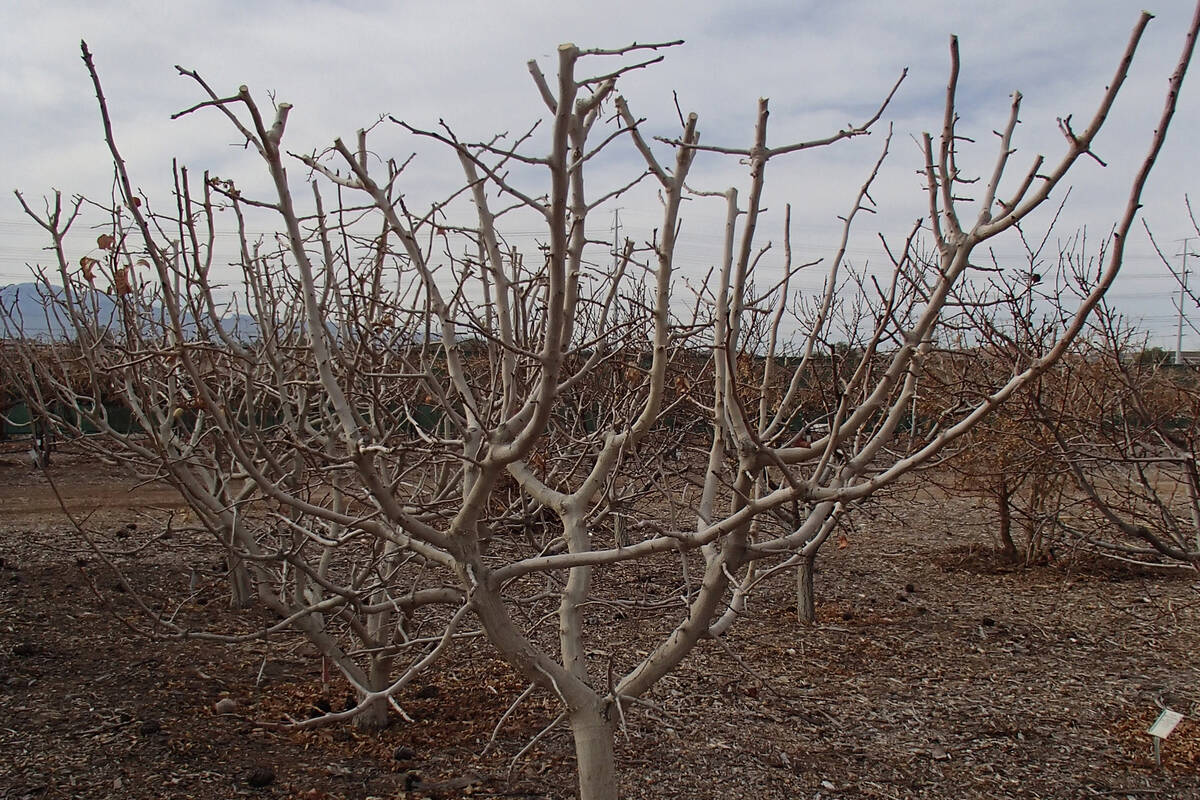Proper pruning of fruit trees requires know-how, artistry
Q: I am having a very difficult time finding someone to prune my fruit trees the way you recommend. I am older and no longer able to direct a novice (which has failed), much less do it myself. The trees are 5 to 20 years old. Specifically, I have two well-producing grapefruits, which need to be thinned and kept under 7 feet; one Wonderful pomegranate (only five large fruit) and one fig tree (at least two crops), both in need of pruning, and a lemon and a tangerine in need of thinning for light.
A: It’s difficult to find anyone with enough skill to prune several kinds of fruit trees. If we were closer to a fruit-producing area, such skilled workers are easier to find. Half of pruning is knowing what to do; the other half is an art (making it look good).
All fruit trees need to be lowered, so the fruit can be reached and harvested by backyard homeowners, preferably without a ladder. When fruit trees are smaller, they can be planted closer together. The height of fruit trees is the same as the distance that they are separated when planting. The height of fruit trees can be lowered earlier in the fall when leaves are still present.
Pruning to lower the height is the easy part. After the fruit tree has been lowered, skill is involved when pruning for production. Several types of fruit trees require several types of knowledge for proper pruning. The role of rootstocks is to make fruit trees semidwarf or dwarf, increasing production, and starting to bear fruit at an earlier age. That’s what fruit tree breeders are focusing on.
Not much pruning is needed for citrus. Citrus pruning is opening the canopy a little bit after lowering its height. For pomegranate, remove the suckers so that five or fewer main stems are present. The best and larger fruit is produced on older wood for pomegranates. In California, they are now pruning to only one stem to make it as easy as other fruit trees. Of course, that creates problems in a pomegranate’s life span.
Q: I have a bet with my husband. I say you can plant during the winter. He says you can’t. Which of us is right?
A: I don’t like to take sides, but you’re right — for the Las Vegas area. Here, you can plant nearly all winter long. In more northern climates that may not be the case; the soil is just too cold or frozen for plant root growth. Plants respond to temperature ranges. Plant roots do the same. When the temperatures are low, their roots grow slower. When the temperatures are high, their roots grow faster.
That range of plant root growth is generally from about 40 to about 80 degrees. Tropical plants have a higher temperature range for plant root growth. Cold-weather (seasonal) plants have a lower temperature range.
Q: When should I remove wooden grow sticks and tree supports? Two fruit trees (peach and apricot) were planted in April and were 24-inch box trees. A fruitless olive tree was planted in March and was also a 24-inch box tree.
When I remove them, I was planning to soak the ground a day before and then try to twist, wiggle and pull the wooden stakes out of the ground. I will then fill in the holes with mulch or garden soil. Or would it be better just to cut off the wooden supports slightly below ground level?
A: When I remove tree supports or stakes, it’s normally after one growing season. If they are used in the fall, for instance, I remove them the next fall. If the tree is not secure in the ground, that means it was not properly planted. The tree will have to be replanted.
I don’t usually wet the soil ahead of time. The soil is wet enough from irrigation. When driving a stake into the ground, I will pound the stake into the solid soil at the bottom of the amended soil area.
Rarely, I will leave wooden support stakes after two growing seasons. Usually this is because the tree was not grown correctly at the production nursery and needs some temporary support or it was planted poorly.
If they don’t pull easily from the ground, I break them off and leave the wood in the ground to rot.
Q: I was reading an article that said when planting tomatoes you should put aspirin, a frozen banana peel (defrosted), a calcium pill, a multivitamin pill and a fish head in the hole and cover that with at least 2 inches of soil before putting the plant in. Sounds crazy to me. What do you think? Also, when is the best time to plant the tomatoes?
A: I don’t know. Try it and tell me how it goes. There is some crazy stuff on the internet. This advice relies on what is released as these things break down. The problem I see is not any of it is “USDA organic.”
I think it will work fine, but ask yourself is that cheaper and more convenient than using a commercial fertilizer in its place?
The best time for planting tomatoes is anywhere between Feb. 15 and March 15.
Bob Morris is a horticulture expert and professor emeritus of UNLV. Visit his blog at xtremehorticulture.blogspot.com. Send questions to Extremehort@aol.com.






















